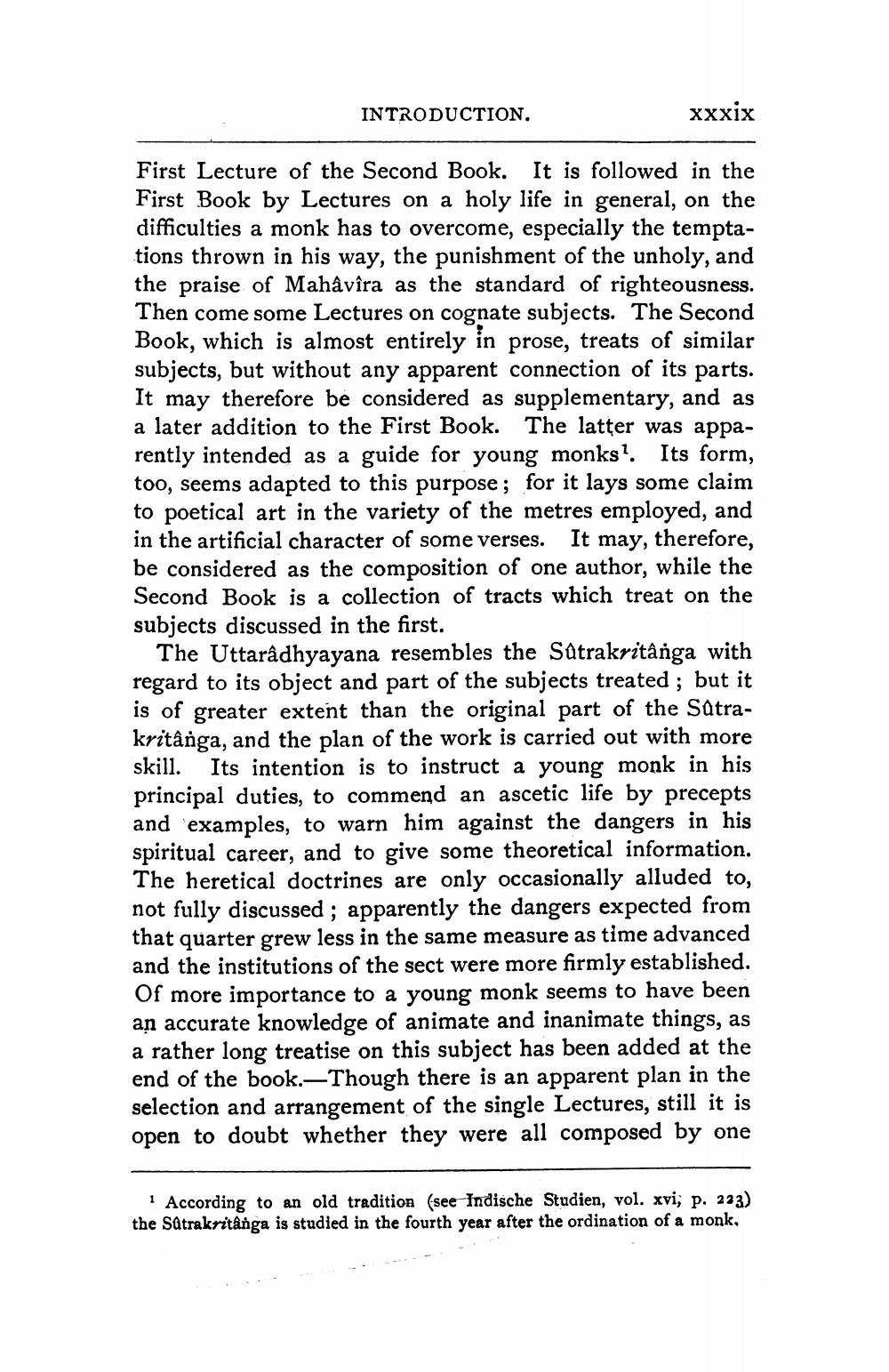________________
INTRODUCTION.
xxxix
First Lecture of the Second Book. It is followed in the First Book by Lectures on a holy life in general, on the difficulties a monk has to overcome, especially the temptations thrown in his way, the punishment of the unholy, and the praise of Mahâvîra as the standard of righteousness. Then come some Lectures on cognate subjects. The Second Book, which is almost entirely in prose, treats of similar subjects, but without any apparent connection of its parts. It may therefore be considered as supplementary, and as a later addition to the First Book. The latter was apparently intended as a guide for young monks1. Its form, too, seems adapted to this purpose; for it lays some claim to poetical art in the variety of the metres employed, and in the artificial character of some verses. It may, therefore, be considered as the composition of one author, while the Second Book is a collection of tracts which treat on the subjects discussed in the first.
The Uttarâdhyayana resembles the Sûtrakritânga with regard to its object and part of the subjects treated; but it is of greater extent than the original part of the Sûtrakritânga, and the plan of the work is carried out with more skill. Its intention is to instruct a young monk in his principal duties, to commend an ascetic life by precepts and examples, to warn him against the dangers in his spiritual career, and to give some theoretical information. The heretical doctrines are only occasionally alluded to, not fully discussed; apparently the dangers expected from that quarter grew less in the same measure as time advanced and the institutions of the sect were more firmly established. Of more importance to a young monk seems to have been an accurate knowledge of animate and inanimate things, as a rather long treatise on this subject has been added at the end of the book.-Though there is an apparent plan in the selection and arrangement of the single Lectures, still it is open to doubt whether they were all composed by one
1 According to an old tradition (see Indische Studien, vol. xvi, p. 223) the Sûtrakritânga is studied in the fourth year after the ordination of a monk.




